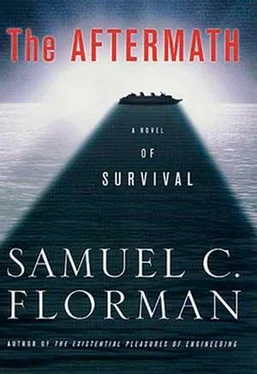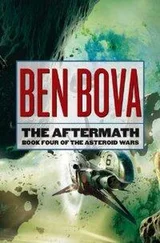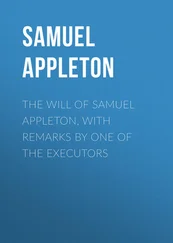Samuel Florman - The Aftermath
Здесь есть возможность читать онлайн «Samuel Florman - The Aftermath» весь текст электронной книги совершенно бесплатно (целиком полную версию без сокращений). В некоторых случаях можно слушать аудио, скачать через торрент в формате fb2 и присутствует краткое содержание. Город: New York, Год выпуска: 2001, ISBN: 2001, Издательство: Thomas Dunne books, Жанр: sf_postapocalyptic, на английском языке. Описание произведения, (предисловие) а так же отзывы посетителей доступны на портале библиотеки ЛибКат.
- Название:The Aftermath
- Автор:
- Издательство:Thomas Dunne books
- Жанр:
- Год:2001
- Город:New York
- ISBN:0-312-26652-9
- Рейтинг книги:5 / 5. Голосов: 1
-
Избранное:Добавить в избранное
- Отзывы:
-
Ваша оценка:
- 100
- 1
- 2
- 3
- 4
- 5
The Aftermath: краткое содержание, описание и аннотация
Предлагаем к чтению аннотацию, описание, краткое содержание или предисловие (зависит от того, что написал сам автор книги «The Aftermath»). Если вы не нашли необходимую информацию о книге — напишите в комментариях, мы постараемся отыскать её.
The Aftermath — читать онлайн бесплатно полную книгу (весь текст) целиком
Ниже представлен текст книги, разбитый по страницам. Система сохранения места последней прочитанной страницы, позволяет с удобством читать онлайн бесплатно книгу «The Aftermath», без необходимости каждый раз заново искать на чём Вы остановились. Поставьте закладку, и сможете в любой момент перейти на страницу, на которой закончили чтение.
Интервал:
Закладка:
“I can tell you something about the coal,” said Marshall, “since that’s a big part of my business. It’s true that South Africa’s largest deposits are far to the north; but there are several productive collieries right here in KwaZulu Natal—at Dundee, Glencoe, Vryheid, Newcastle, and Utrecht, just to name a few. These mines may be a couple of hundred kilometers inland, but they all used to be linked by train and highway to Richards Bay, which happens to be where we are right now. I dare say that with a little fixing up these roadbeds will do nicely for ox-drawn wagons.”
As the discussion turned to details of mining and transport, the crowd that had gathered to hear the news from Ulundi began to disperse. But Marshall continued his dissertation undeterred.
“Two hundred kilometers too far, you say? How about the Zululand Anthracite Mine, right near Ulundi? Or better still, look near Heatonville, just north of Empangeni, which is just a few kilometers up the hill from here. Coal was actually mined there for a short period in the 1980s. Most South African coal is fairly near the surface, which should be good news for anyone starting out with limited labor and primitive tools. Of course, if you don’t want to dig at all, just go to Nongoma. It’s a bit more than one hundred kilometers away, but the outcrop seams are right there at the surface, ready for the picking. Local folk come with their wheelbarrows and take home some very high-quality pieces.
“So, don’t worry about having access to coal, now and practically forever. We have all that we need, some of it is not that hard to get to, and the geologists tell us there is lots more. They’ve identified a seam parallel to the coast, starting not far from here and running for hundreds of kilometers up into Mozambique.
“As you know, once you have coal, you have the beginning of your industrial revolution. Not only can we burn the coal for power, but we can also use it to make oil, and all the things one can make from oil, for example, acrylic fibers, explosives, fertilizers, ammonia, phenols, waxes, paints—our company made more than one hundred twenty products.” Marshall’s voice was growing louder and his motions more animated.
“Thank you, Kelvin,” Wilson Hardy said, breaking in as diplomatically as possible. “But before we can rebuild your very sophisticated factories, we must have some very sophisticated equipment, and for that we’ll need sophisticated machine tools, and in order to make those machine tools we’ll need more rudimentary machine tools, and so forth back through several generations of tools, and before we can start that process we’ll require something of a steel industry. So, assuming we can get the coal, where are we going to get the iron?”
“Pieter’s the one to tell you about that,” Marshall said, “and he’ll probably tell you that all you have to do is look under your feet.”
Pieter Kemm stepped forward. “What Kelvin means,” he said, “is that my company, Richards Bay Minerals, mines the sand dunes right here in Richards Bay, just down the beach a bit. It’s an extraordinary story: These dark sand dunes, two kilometers wide and seventeen kilometers long, have been found to contain concentrated amounts of titanium, zircon, and high-purity iron. Through the ages, these minerals, originating in our mountains, have been washed down to the sea and then redeposited by wind and waves in the form of dunes. Since the 1970s, the mining of these dunes has provided a large share of the world market in these valuable materials. I’m sure that, as the reconstruction of the world begins, our mining and factory operations will play an important role.
“In the meantime, although the largest iron deposits lie far to the north and west, six hundred kilometers away and more, I feel certain there is enough closer by to take care of our needs for a good long while. In Greytown, just one hundred kilometers distant, the very first commercial iron in South Africa was mined and smelted in 1901. The works were on a farm named Proclamation and were operated by a Mr. C. H. Green. The ore was of good quality, and although the mine was abandoned long ago, I don’t see why it couldn’t be reopened. At least that’s what one of my geologist friends told me just last year. In the Dundee area, already mentioned in connection with coal, iron was mined back in the forties, and I’m sure there is more to be had for enterprising pioneers.”
As Kemm paced back and forth under the canvas roof, which flapped occasionally in the breeze, a feeling of growing excitement could be sensed. The morning had started with good news about a surviving population in Ulundi, and food—precious, life-sustaining food. The thrill of these tidings of salvation was still making itself felt. And now the information about natural resources was almost an unbelievably fortuitous development. “The icing on the cake,” as one engineer put it, rubbing his hands together briskly.
Pieter Kemm was almost finished, but not quite, and nobody seemed about to cut him short. “Most interesting of all,” he continued, “at least from an archeological point of view, is the laterite near Empangeni, which as Kelvin said, is right next door to where we are. This laterite is a weathered rock, rich in iron oxide, close to the surface, easily accessible. It is not a high-grade ore, but it was used by early native tribes in the manufacture of iron spears and other implements. Archeologists have long been interested in the entire Richards Bay area, where there are outcroppings of various porous stones rich in iron. Studies indicate that these materials were used by native ironworkers more than a thousand years ago. Incidentally, in the early days, charcoal rather than coal was used in the smelting process, and we’ve had a thriving charcoal-burning industry right in this very area. Black wattle wood grows all over the place—it’s something of a nuisance plant really—but it’s excellent for making charcoal.
“The point is, the iron is here, available in large quantities—inland in conventional mine settings, and right along the coast in the sands and stone deposits. The coal is here, and wood for charcoal. So, if our group is half as clever as it’s supposed to be, we should have a thriving steel industry going in short order.”
“Hey, Pieter,” an unidentified voice called out. “You’ve got electrical people in your audience, and we’re waiting to hear you say something about copper.”
“Well, the copper is mostly up north, at Phalaborwa, five hun dred kilometers away, and Messina, which is even farther. However, I know there’s asmall deposit near the surface at Nkandla, just seventy kilometers inland. It was mined briefly at the beginning of the last century, and then abandoned as economically unviable. But it should be enough to give us something of a start.
“Finally, when we talk about distances, let’s not forget that when the Boers trekked inland from the Cape Colony to the northeast in the 1830s, they covered more than a thousand kilometers, taking cattle and all their possessions, fording rivers and traversing mountain passes, using ox-wagons. And then, for many decades, they carried on active trading between the coast and their inland domains, also using that same slow but steady mode of transport.”
“Ladies and gentlemen,” Captain Nordstrom rose, seeming refreshed after having sat with closed eyes through these last reports, “this must conclude our introduction to the resources of our new homeland. Encouraging indeed, but I want to be sure that we do not get carried away. First of all, I share General White’s worry about the immediate needs of our group. I don’t like to see us all excited about iron in the ground when we don’t yet have a roof over our heads. But let us assume that we’ll handle these mundane problems and manage to build ourselves a serviceable camp. What I am really concerned about as we look to the future is not so much KwaZulu Natal’s basic resources, which I am happy to know are abundant, but rather its people, about whom I feel much less sanguine.
Читать дальшеИнтервал:
Закладка:
Похожие книги на «The Aftermath»
Представляем Вашему вниманию похожие книги на «The Aftermath» списком для выбора. Мы отобрали схожую по названию и смыслу литературу в надежде предоставить читателям больше вариантов отыскать новые, интересные, ещё непрочитанные произведения.
Обсуждение, отзывы о книге «The Aftermath» и просто собственные мнения читателей. Оставьте ваши комментарии, напишите, что Вы думаете о произведении, его смысле или главных героях. Укажите что конкретно понравилось, а что нет, и почему Вы так считаете.












